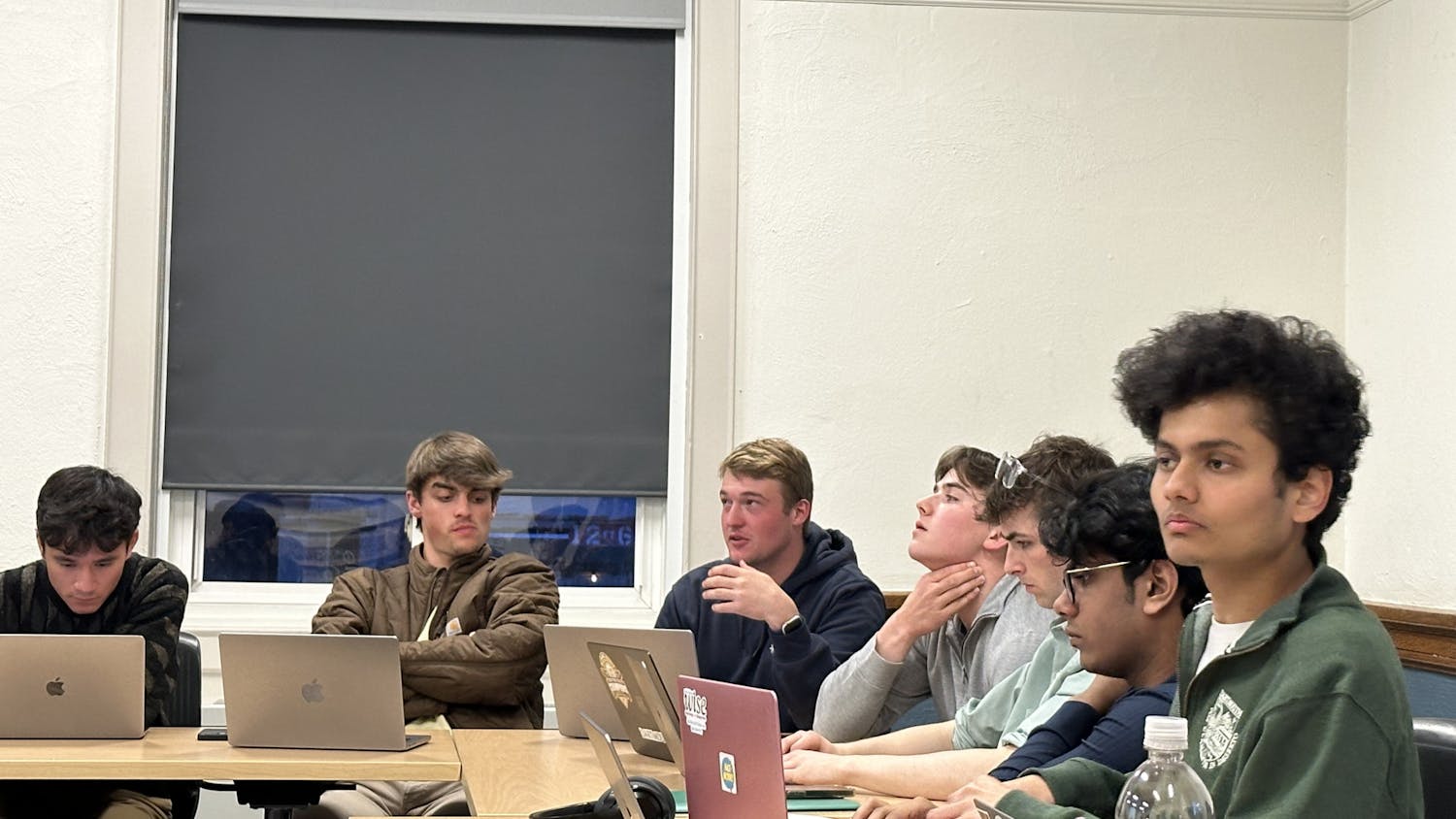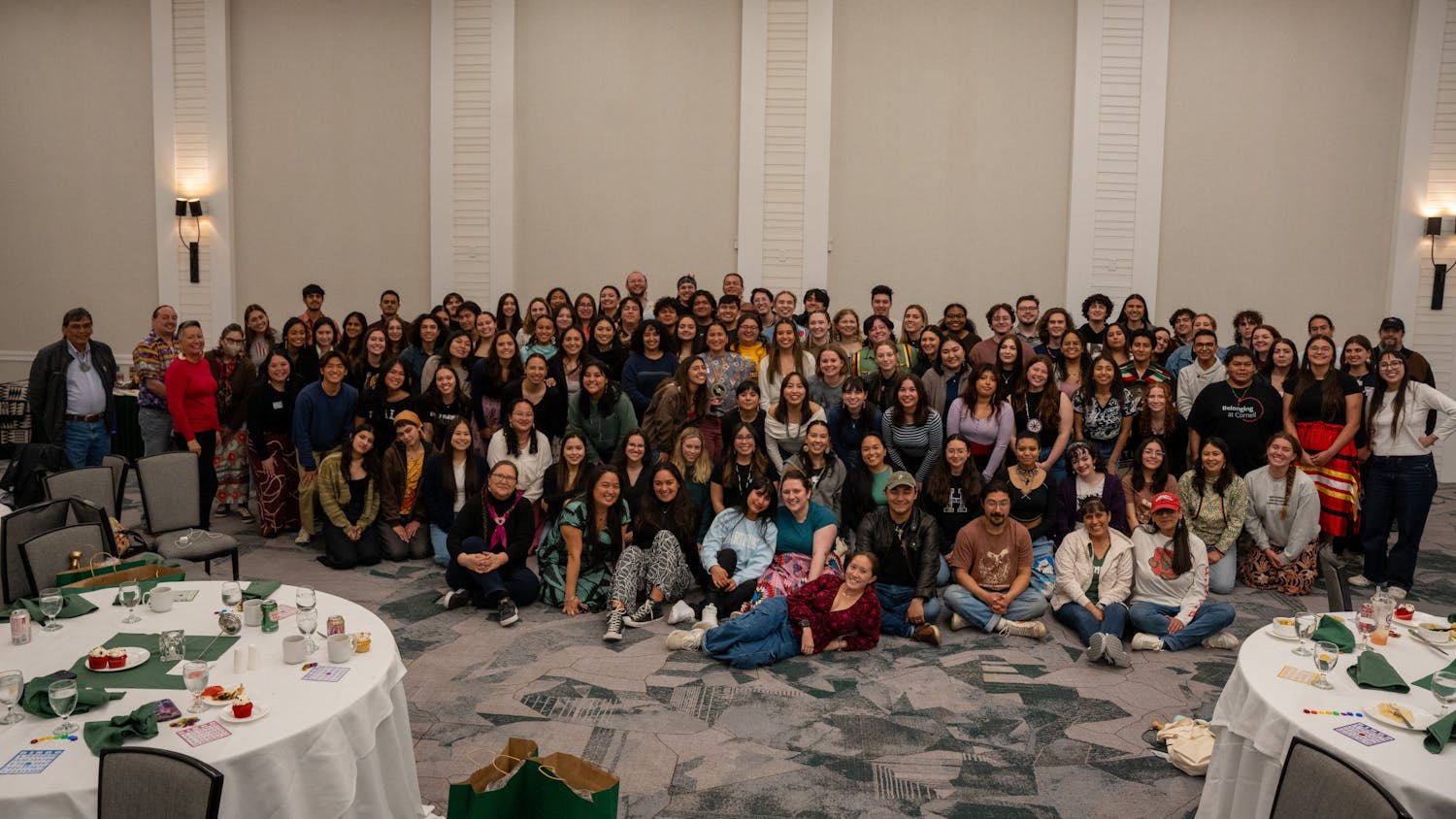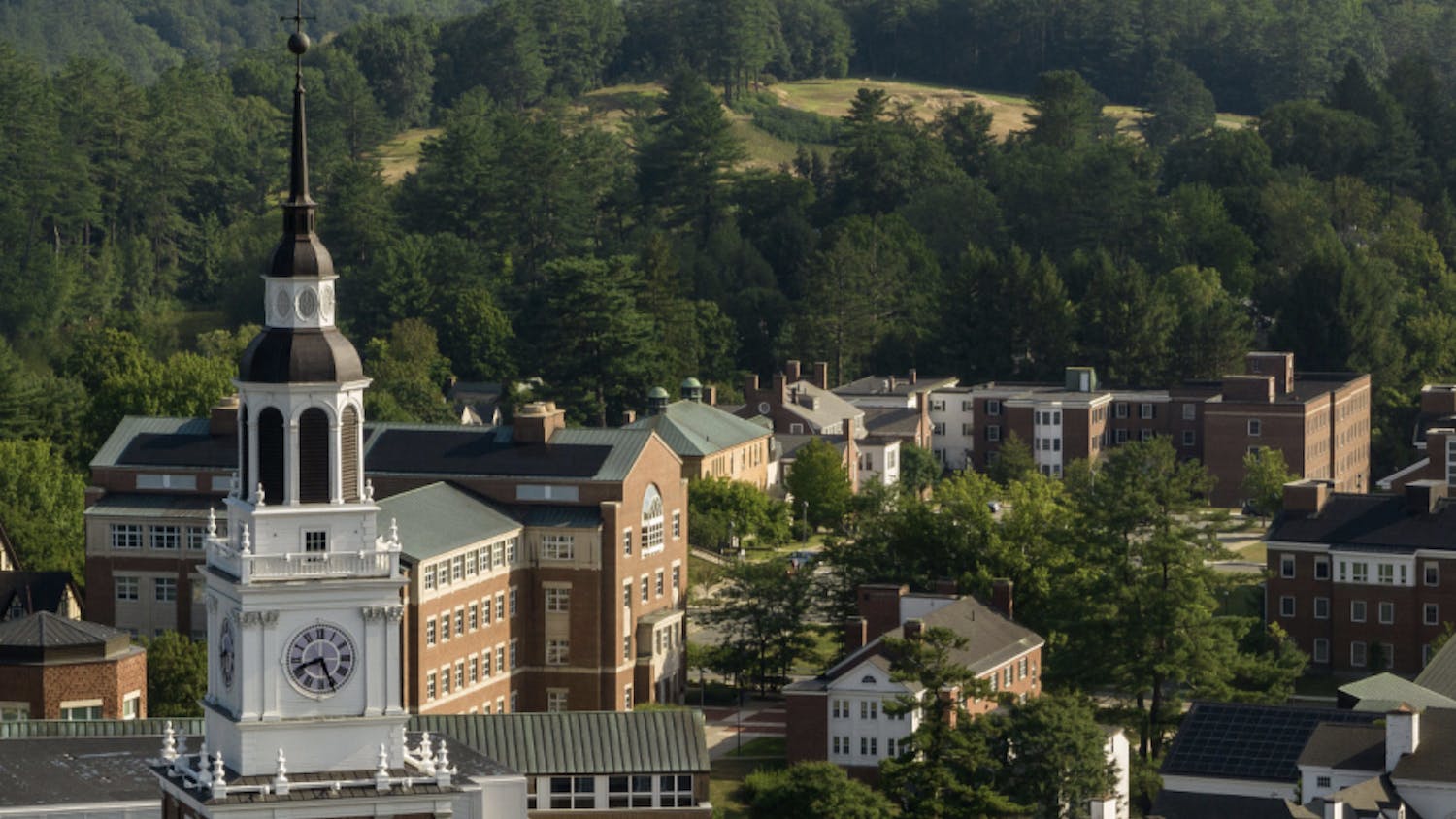On Earth Day, April 22, the Sustainability Task Force, which was created by College President Phil Hanlon a year earlier, published its inaugural report, “Our Green Future: The Sustainability Road Map For Dartmouth,” which aims to guide the College toward a more sustainable use of energy, waste, water, food, transportation and landscaping. According to environmental science professor Andrew Friedland, the report intends to set “larger scale principles and objectives” instead of specific recommendations. The report states that in the future, the Sustainability Office will put out an annual progress report.
In seven meetings over the course of the last year, the task force — which included undergraduates, graduate students, faculty and staff from across campus — met to sketch out their ideas for each section of the report, such as energy and water, according to Friedland and director of sustainability Rosi Kerr ’97.
Friedland and Kerr were the appointed co-chairs of the task force. Before each meeting, the co-chairs drafted recommendations for each topic based on previous work that had been done by other committees around campus, such as the energy team in campus services, Kerr said. It was a “straw-man starting place for the conversation” or a starting place for members of the task force, she added.
Kerr said that during every meeting, task force members would move around the room and add their comments on big sheets of paper on the wall. In addition, throughout the process, the task force consulted and asked for input from various members of the community — from students to Hanover citizens — who were working on making sustainable changes to the town itself, executive director of the Revers Center for Energy at the Tuck School of Business and task force member April Salas said.
Out of these discussions, the co-chairs then wrote up and circulated drafts of each sections by email. Once the full report was assembled, the draft was circulated several more times to members of the task force.
“From my perspective, the process was fairly collaborative,” Kerr said. “There was a balance between collaboration and not putting too much work on people who already had full plates.”
The most specific recommendations were in the areas about which the College is already knowledgeable, Kerr said. For an example, the recommendations regarding Dartmouth’s energy use include the proposal to obtain 50 percent of campus energy from renewable sources by 2025 and 100 percent by 2050. Similarly, Hanover has an upcoming vote to commit to 100 percent renewable energy by 2050.
The report’s waste recommendations included reducing the total amount of waste produced and increasing the amount of waste that is recycled.
The recommendations around the sustainability of food at Dartmouth included summarizing the “environmental, social and economic impacts of our food system” into a report by 2019. Since the task force was less knowledgeable about the College’s food system than its energy system, the latter of which has been studied for years by various committees, it was unable to be as specific in recommendations. Reforming the College’s food system is a difficult problem to address, Kerr said, because students pay for food and thus have expectations.
“People care about food,” Kerr said. “If you take tomatoes out of the salad bar because they’re not sustainable in January, everyone gets very upset.”
The recommendations for water use were similar to those for food use and emphasized the need to assess the impacts of reducing water use and improving water efficiency. The report also set the goal of establishing an annual water report by 2018 that would detail consumption patterns and identify areas of improvement.
In terms of transportation, the report recommended that the College begin tracking air travel and develop a sustainability standard for vehicles owned by the College.
For the College’s landscape and ecology, the report recommended improving water quality and developing a “green landscape” standard on campus to reduce the use of harmful chemicals.
In addition to recommendations for the College’s operations, the report also proposed using the campus as a “living lab,” and involving students in the progress toward making campus more sustainable. The task force itself is an example since it includes eight undergraduates as members. The report proposes to continue this process in future reports.
“Students can be involved in that process and have an opportunity while they’re here at Dartmouth to have the experience of grappling with something that’s complicated and a multi-faceted challenge and coming up with a creative, innovative solution,” Kerr said.
The task force also wants the College to match its fellow institutions in sustainability. The beginning of the report compares the College to institutions such as Stanford University, Harvard University and Massachusetts Institute of Technology, all of which have greenhouse gas, waste and water commitments, in addition to public sustainability plans. While the task force follows in these universities’ footsteps, Salas emphasized it compared the College to its peer institutions “as sort of a point of measure,” but that it will generate its own unique solutions.
“We wanted it to be relative to our geography, our energy system in the Upper Valley,” Salas said. “A system that worked in California isn’t necessarily going to work in New Hampshire.”
The College has had a long history with sustainability, both Friedland and Kerr said. In addition to an academic focus on sustainability, the College had one of the first recycling programs in the ’80s, according to Kerr. For Friedland, who arrived at the College in 1987, the journey toward sustainability has been an ongoing one.
“One of the first committees I joined … was called ‘the energy council’ at the time, and we would look at graphs drawn by hand because people weren’t widely using spreadsheets and computers in 1987,” Friedland said.
One of the graphs he remembered best was the oil usage graph, which showed a spike in “No. 6” oil use.
“Then, [five or seven years ago] we peaked on our oil demand, and we started dropping on our oil demand, so now we use ‘a mere’ 3.5 million gallons of No. 6 oil a year,” he said.
Friedland described Number 6 oil as the “dregs” of crude petroleum, which contains metals like lead, arsenic and mercury, and its combustion leads to particle emission. Friedland noted that “all oil is dirt, but [Number 6] is the dirtiest.”
Therefore, he feels passionately about the report’s recommendation to transfer to renewable energy, a huge step away from No. 6 oil.
Student in the ecology, evolution, ecosystems and society graduate program and a member of the task force Flora Krivak-Tetley ’02 A&S ’18, remembers sustainability efforts she participated in as an undergraduate that were less successful.
“[In 2001,] I was part of a group of students who wrote up a sustainability proposal that focused a little less on energy and more on waste systems and … unfortunately, like many earlier efforts, that didn’t end up going anywhere,” Krivak-Tetley said.
However, she believes this report will be much more successful. She attributes this difference in part to the change in the general climate of educational institutions around the country since she was an undergraduate.
“I don’t think that there were many universities that had started making efforts to make these kinds of changes,” Krivak-Tetley said.
She also said that efforts towards sustainability in the early 2000s were much less financially viable than they are today. She said the most important change is Hanlon’s support of the report.
“To make any changes at a large scale in an institution, there needs to be support at a high level,” she said.
Through a campus-wide email, Hanlon endorsed the report publicly, and the task force hopes to keep the College accountable and transparent. The Sustainability Office will publish an annual Sustainability Action Report on the College’s progress, which will be undertaken by a variety of administrations around campus. However, members of the task force continue to emphasize undergraduate involvement.
“I’m really very passionate about the idea of figuring out how we can tackle these things here so that you guys can go out and tackle them in the world,” Kerr said.



